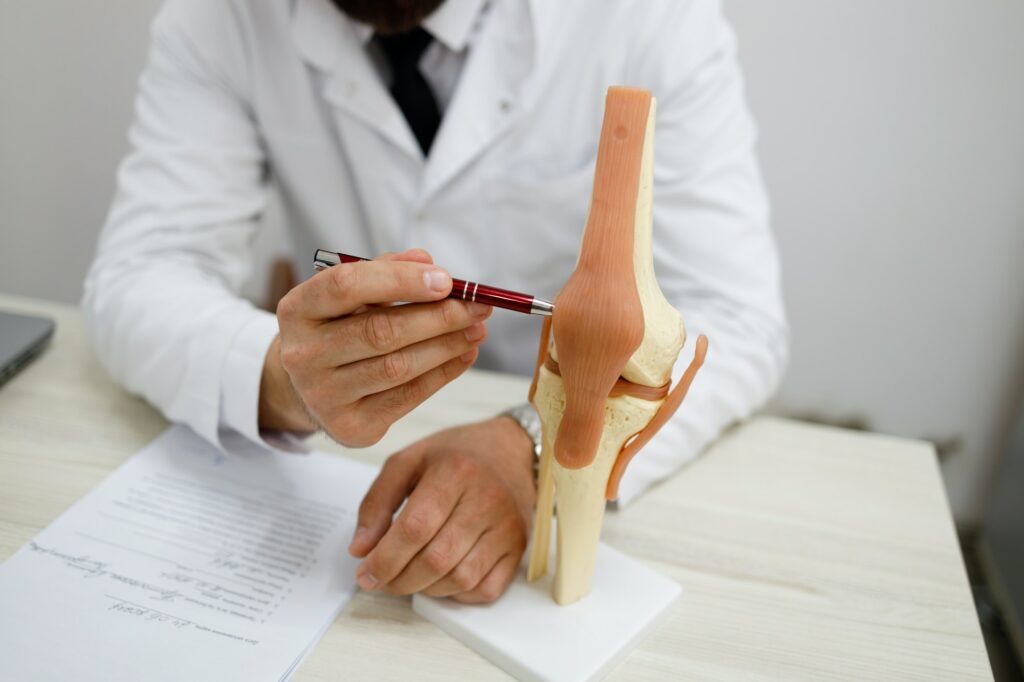Introduction: The human body is a remarkable piece of biological engineering, with various intricate components working together to facilitate movement and functionality. Among these, the knee joint stands out as a truly remarkable structure. Acting as a crucial link between the thigh and lower leg, the knee enables mobility, stability, and weight-bearing capacity. However, despite its remarkable capabilities, the knee joint is also prone to vulnerabilities and injuries. In this blog post, we delve into the fascinating world of the knee, exploring its mobility, vulnerabilities, and the reasons behind its susceptibility to injury.
The Knee’s Anatomy: To comprehend the knee’s mobility and vulnerability, we must first understand its anatomy. The knee joint is composed of three primary structures: the femur (thigh bone), the tibia (shin bone), and the patella (kneecap). These bones are connected by a network of ligaments, tendons, and cartilage. Additionally, the knee joint contains two essential shock-absorbing structures called menisci, which are C-shaped cartilage discs nestled between the femur and tibia.
Mobility of the Knee: The knee joint is classified as a hinge joint, allowing movement primarily in one plane—flexion and extension. This mobility is crucial for performing daily activities such as walking, running, jumping, and climbing stairs. Moreover, the knee joint allows a small degree of rotational movement, contributing to activities like twisting, pivoting, and changing direction swiftly.
Supportive Structures: While mobility is a defining characteristic of the knee, it heavily relies on various supportive structures for stability. The ligaments, such as the anterior cruciate ligament (ACL) and posterior cruciate ligament (PCL), play a vital role in maintaining the knee’s stability by limiting excessive forward and backward movement of the tibia relative to the femur. The medial collateral ligament (MCL) and lateral collateral ligament (LCL) provide side-to-side stability, preventing excessive knee joint opening or closing. These ligaments, while essential for stability, also render the knee vulnerable to injuries if subjected to excessive force or sudden movements.
The Menisci and Articular Cartilage: The menisci, positioned between the femur and tibia, act as shock absorbers and aid in load transmission across the knee joint. They distribute forces evenly and reduce the impact on the articular cartilage—the smooth, slippery tissue that covers the ends of the bones. Articular cartilage allows for smooth movement within the joint, minimizing friction and facilitating easy gliding. However, both the menisci and articular cartilage are prone to damage, especially during high-impact activities or due to wear and tear over time.
Common Vulnerabilities and Injuries: Given its complexity and the demands placed upon it, the knee joint is susceptible to a range of injuries. Some common knee injuries include:
- Ligament Tears: ACL and MCL tears are prevalent, particularly in sports that involve sudden changes in direction or high-impact movements.
- Meniscus Tears: Twisting or rotational movements can cause tears in the menisci, leading to pain, swelling, and compromised joint function.
- Patellofemoral Pain Syndrome: This condition is characterized by pain around the kneecap and is often a result of muscle imbalances, overuse, or poor biomechanics.
- Osteoarthritis: The breakdown of the articular cartilage over time can lead to osteoarthritis, a degenerative joint condition causing pain, stiffness, and reduced mobility.
Conclusion: The knee joint is a marvel of biomechanical engineering, enabling a wide range of movements that are essential for daily activities. However, this mobility comes
at a cost, as the knee is prone to vulnerabilities and injuries. Understanding the knee’s complexity and vulnerabilities can help us appreciate the importance of maintaining its health through appropriate conditioning, injury prevention strategies, and seeking prompt medical attention when needed. By nurturing and caring for our knees, we can continue to enjoy the incredible range of activities that make life fulfilling and enriching.




